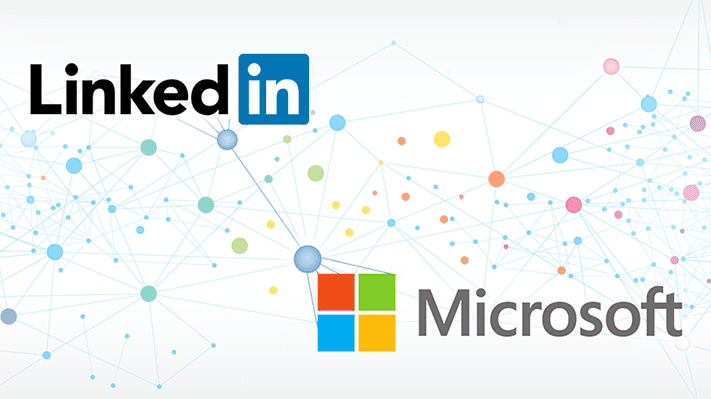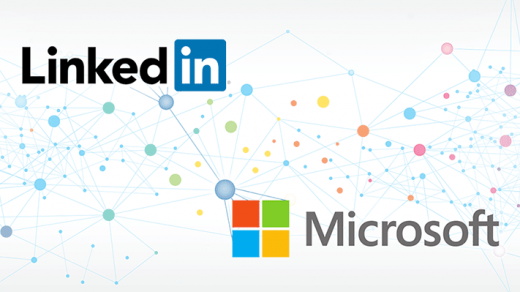LinkedIn + Microsoft = Opportunity
June 30, 2016
Microsoft recently hit the headlines after revealing a $ 26 billion agreement to buy LinkedIn. In a digital age when most people obtain their social updates and look for work using a social network, Microsoft had been noticeably lacking in this area for some time.
When a large corporation has no expertise in a rapidly growing area such as social media that represents a Hard Trend (a future certainty) going forward, it typically buys what it needs. The acquisition of LinkedIn is a perfect example of this strategy. However, there is much more to this story.
In many ways, both Microsoft and LinkedIn had been trying to achieve similar goals in different ways for the last few years. By combining their capabilities, both will be stronger together than they ever were alone.
Microsoft is continuing to transform its brand and promote a different way of thinking about the value it can provide. Writing off the $ 7.6 billion Nokia acquisition as a failure was a brave but necessary move. Some of you might have read my article about this acquisition when it happened, saying that “Microsoft had acquired the past not the future, and it would be like a break slowing them down.” Once again, when you look at the future using Hard Trends, invisible problems as well as opportunities become visible.
Thanks to Microsoft embracing the Hard Trends of cloud computing, virtualization and mobility, anyone can now subscribe to a Microsoft service on an extensive list of iOS or Android devices. There appears to have been a realization that users expect to drift seamlessly from device to device and refuse to be shackled to any isolated program or operating system.
Microsoft can expand its value to customers by finding new ways of providing users with everything they need in one subscription model. Office 365 has finally evolved from Word, Excel and PowerPoint, and a wide range of new tools are now appearing on a regular basis. For example, only last week, Planner (Microsoft’s answer to Trello) was announced for all subscribers.
Microsoft obviously saw LinkedIn’s massive social network of 433 million business members across 200 countries as a mouthwatering prospect. This member (and related user data) land grab would also help align Microsoft products with corporate objectives and responsibilities.
Our needs have significantly evolved, and the age of the old PC/Windows/Office model is quickly dying. A company adding the biggest business community platform to its portfolio that is sold to large business groups is a fantastic move.

LinkedIn has over 7 million active job listings and access to Lynda.com, which could offer new training services directly to businesses across the globe. Organizations could manage recruitment and training and even perform job interviews through the Skype for Business app that could soon be embedded into LinkedIn.
LinkedIn has enjoyed tremendous success in encouraging its users to write on its platform, sharing insights and expertise that had never been available before. Could this open up another opportunity where business users of Office 365 will be able to tap instantly into the knowledge of people who have worked on similar projects?
The catch is that all of these essential business apps or premium features will begin to get locked behind the Office 365 subscription model. It appears that Microsoft has finally woken up to the importance of having an anticipatory mindset and is working on pre-solving this future problem.
There is a wealth of opportunities for both Microsoft and LinkedIn, but many are starting to wonder if this will kick-start others into action. Twitter now has 310 million visitors a month, but its growth has been notoriously struggling lately.
The lack of growth could make Twitter incredibly vulnerable, as Google’s parent company could quickly acquire the struggling social network at a reasonable price from its bursting cash reserves.
Twitter desperately needs the right parent to unlock the fantastic potential. Google has also struggled in the world of social after its much-maligned Google+. Maybe such a deal could represent another match made in heaven that brings out the best in both parties.
The increasing sophistication of machine learning and algorithms is increasing a thirst for real-time data combined with a powerful real-time social element. It’s easy to see why both LinkedIn and Twitter have become very attractive to the large tech sharks.
Once again we are witnessing the transformation of organizations that are migrating away from being reactive to a 21st-century anticipatory mindset. The only question that remains is: What are you and your company actively doing to ensure you are the disruptor rather than end up disrupted?
Digital & Social Articles on Business 2 Community
(14)



